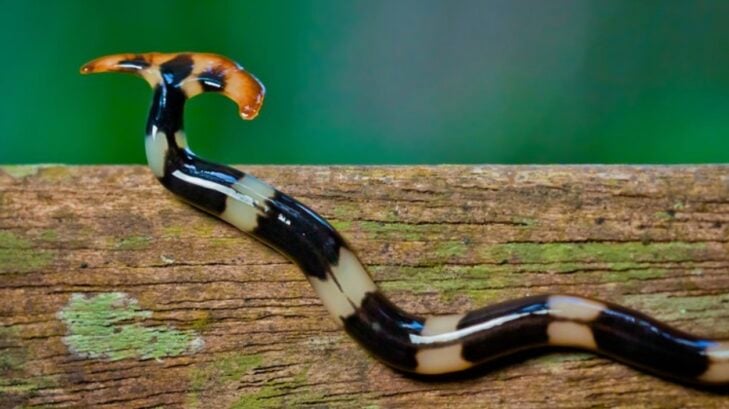Wildlife experts in Huntsville, Alabama are warning the public after hoards of slimy hammerhead worms have been spotted invading lawns across the state.
The creepy crawlers can grow up to a whopping one foot long and have some toxic abilities that might make you not want to pick them up.
“You certainly don’t want to pick them up with your bare hands, because they can secrete that toxin and as far as we know, we don’t have a ton of research on this, but it can cause your skin to be irritated,” entomologist with Auburn University and the Alabama Cooperative Extension System, Katelyn Kesheimer told FOX.
Also known as bipalium, the invasive worm can also harm your pet, so just make sure you keep a good eye on them when they got outside to potty.
If you or your animal does come in contact with one of the worms, simply wash the touched area off with soap and water. The worms are toxic, but they are not known to cause any serious damage, just minor irritation.
The main reason why entomologists are concerned about these hammerhead worms is they attack and kill America’s native earthworm. Hammerheads are actually native to Southeast Asia and are carnivores.
“They are carnivores, which means they eat other insects, and their food of choice is earthworms,” Katelyn said.
Earthworms keep the soil healthy and a hoard of hammerheads sliming their way across your lawn can turn the grass from green to brown within 48 hours.
The warm climate in California, Florida, Georgia, Louisiana, Mississippi, North Carolina, South Carolina, and Texas, actually create perfect conditions for the worms to thrive. Especially, throughout this summer season.
Scott D. Stewart, an entomologist at the University of Tennessee said, “It will allow these and other subtropical and tropical insects to expand their territories northward.”
Officials say if you spot a hammerhead that there is no reason to call pest control. You can simply kill them by pouring salt or vinegar on them. Also note, it’s not wise to try and cut them in half because they will just grow themselves back and this time you’ll have two worms instead of one.



